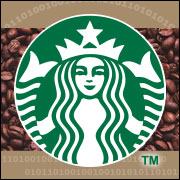
Lost somewhere in the pile that is a current research project is an article on customer loyalty that says that more than half of customers who recently exhibited loyal behavior toward a vendor said they’d switch to another vendor in an instant.
The question prompting this answer is whether these customers would switch for a better deal. It was a trick question trying to determine loyalty.
Of course — who doesn’t want a better deal?
It also encompasses all that is not well in our approaches to customer loyalty today. We’ve developed a culture in which price is the primary motivator, and one’s effort in the marketplace is all about getting the lowest price.
Getting a low price and obtaining a great deal are not the same, however. For instance, the price of a car and the perception of getting a great deal hinge on the car’s brand.
Rewards ≠ Loyalty
We also have trained customers to expect a reward, discount, special deal or whatever you want to call it just for showing up. In fact, we’ve so confused the idea of customer loyalty with rewards that both are practically useless. We reward customers, they collect points, miles and stamps, and we consider those acts of collection to be evidence of loyalty.
If the article is to be believed (I wish I could find it), we’re deluding ourselves, thinking that rewards and loyalty are the same, or perhaps that one breeds the other.
They are separate and distinct. Rewards — or discounts, which is what they amount to — once were thought to be tools for optimizing something called the marginal consumer, someone who didn’t see value at your price point but might be induced to make a purchase at a lower price.
Gathering trade from the marginal consumer is a way to increase revenue, even if you can’t get the full price, and it’s particularly useful in a market that’s growing at the rate of population and no faster. It’s a way to goose revenues even if it erodes margins (and it is the direct ancestor of the punch line, “We’ll make it up on volume”).
What happens, though, if every customer becomes a marginal one? Specifically, what does this mean for list prices? You already know.
Nevertheless, current reward programs are working, or they’re working well enough. Of course, they aren’t making customers loyal and they aren’t enabling vendors to charge a premium for their wares, so maybe they aren’t working.
When I hear rewards, I automatically think about the wanted posters in the post office. We want you, but you probably don’t want us. Right?
Apple and Starbucks
Just when you think things couldn’t get worse for loyalty programs comes another report (which I can find) from McKinsey. “Companies with loyalty programs posted a 2.28 percent comp sales increase, while those without loyalty programs saw 4.26 percent gains,” wrote Liz Hilton Segel, Phil Auerbach and Ido Sege in “The Power of Points: Strategies for Making Loyalty Programs Work.”
Just because you have a loyalty program doesn’t mean it’s working.
To add insult to injury, there are many companies that don’t use rewards or loyalty plans that are doing just fine. Apple comes to mind. It has a robust business and everybody pays list price.
Starbucks has in its loyalty program more than 10 million customers who are actually loyal by various measures like buying more.
To be clear, loyal customers are those who would make repeat purchases even if there were no inducement. Over time, loyal customers buy more, expand their exposure to your brand, and become more profitable because they know and understand your drill.
What’s the similarity between companies like Apple and Starbucks and the rest of the trade who are giving the store away and barely making it?
Engagement plays a big role in loyalty. Presumably only masochists engage with vendors they don’t like, so engagement seems like a good place to start, but what comes first? Engaged customers become loyal over time, but you could say that every coupon clipper in the world is therefore engaged, so what’s the deal?
Simply put, when customers engage with a vendor on an area of mutual interest there’s the necessary spark for loyalty. Note the mutuality because it’s important. Coupon clippers are engaged, but the vendors really aren’t, and it takes no special talent to offer a discount.
Vendors have to be able to pick their spots for engagement; to engage in everything is profoundly wasteful.
What Customers Care About
That’s why I advocate for identifying moments of truth. They are the things that customers care about and that vendors need to uncover so that they can engage in a mutually beneficial way.
To engage customers this way is a route to developing their loyalty, and as more vendors discover this they effectively train customers in new practices. All of this makes older rewards programs seem quaint.
The next time you’re wondering how to generate loyalty in your customers or speculating about why they take the discount and run, don’t automatically assume that “customers have changed” or some other marketing clich, and what you have is all you get.
Customers always do what they’re supposed to do. If it’s not what vendors want them to do, then it’s likely because vendors haven’t figured out how to ask the right question.

























































